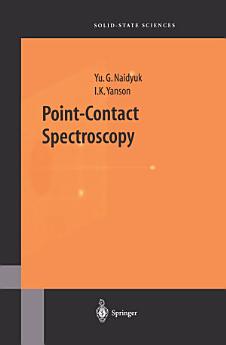Point-Contact Spectroscopy
Yu.G. Naidyuk · I.K. Yanson
2019年4月 · Springer Series in Solid-State Sciences 第 145 冊 · Springer
電子書
297
頁數
report評分和評論未經驗證 瞭解詳情
關於這本電子書
The main goal of solid-state physics is investigation of the properties of the matter including the mechanical, electrical, optical, magnetic, and so on with the aim of developing new materials with defined characteristics. Nowadays, the synthesis of superconductors with high critical temperature it consists of or fabrication of new heterostructures on the base of semiconductors, in cre ation of layered, amorphous, organic, or nanofabricated structures and many others. To do all of these, the various methods of investigation are developed during the past. Because it is impossible to find an universal method to in vestigate a variety of materials, which are either conducting or insulating, crystalline or amorphous, thin-layered or bulk, magnetic or segnetoelectric, and so on, various kind of spectroscopies, like optical, neutron, electron, tun nel and so on, are widely used in solid-state physics. Recently, a new type of spectroscopy, namely, the Point-Contact Spectroscopy (PCS), was designed for study of the conduction-electron interaction mechanism with a whole class of elementary excitations in the solids. In PCS, a small constriction, about a few nanometers large, between two conductors plays a role of a spectrome ter. Namely, because of inelastic scattering of accelerated electrons, the I - V characteristic of such a tiny metallic contact is nonlinear versus an applied voltage and its second derivative surprisingly turns out to be proportional to the electron-quasiparticle-interaction spectrum.
關於作者
Both authors are affiliated with the B. Verkin Institute for Low Temperatire Physics and Engineering, National Academy of Sciences of Ukraine.
為這本電子書評分
請分享你的寶貴意見。
閱讀資訊
智能手機和平板電腦
手提電腦和電腦
你可以使用電腦的網絡瀏覽器聆聽在 Google Play 上購買的有聲書。
電子書閱讀器及其他裝置
如要在 Kobo 等電子墨水裝置上閱覽書籍,你需要下載檔案並傳輸到你的裝置。請按照說明中心的詳細指示,將檔案傳輸到支援的電子書閱讀器。







